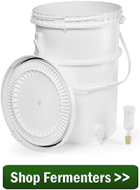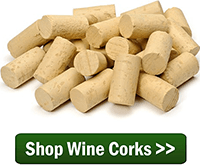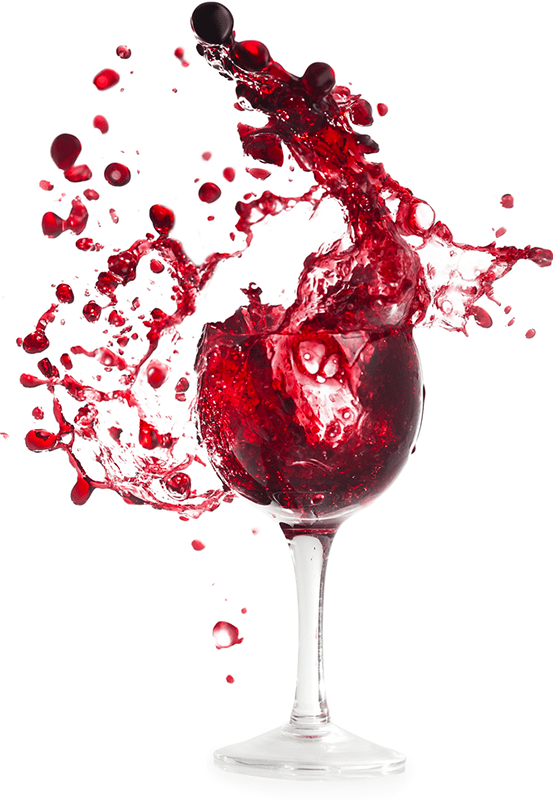I just started to look into making wine. I read some articles on your website and others. One thing confusing me is it seems like oxygen in the wine is good when it is being made but bad after it is made. How can oxygen be both good and bad? Thanking you in advance,
Greg
—–
Hello Greg,
Oxygen plays a role in wine making in two distinctly different ways at two different stages: Early on it’s what allows the wine yeast to grow successfully, insuring a vigorous fermentation. Later on, it’s what allows the wine to develop and maturate during the aging process. The main difference between these two stages is how much oxygen is involved in each.
While the Wine is Being Made:
Lot’s of air exposure is good for the primary fermentation – the first 3 to 5 days. This is when the wine yeast is trying to multiply itself into a colony that is about 100 to 200 times the little packet of wine yeast you originally put in the wine must. The yeast need this oxygen to multiply successfully.
A lot of CO2 gas from the fermentation is infused within the wine must at this point. CO2 is also coming off the fermentation as a gas. This makes it very hard for excessive oxygen to saturate into the wine and cause oxidation. This is why fermenting the wine with no air-lock is not an issue at this point.
But the rules change after the fermentation begins to slow down. This is usually around the fifth day. At this point, oxygen exposure should be kept to a minimum. Too much oxygen exposure can be bad for a wine after this point. The wine yeast have colonized into large enough numbers and no longer need to grow; the CO2 gas from the fermentation is starting to taper-off dramatically and is no longer able to protect the wine from the ill effects of excessive air and oxidation.
When transferring the wine off the sediment to another container (racking), any splashing should be eliminated as much as possible. The same holds true when bottling the wine. Splashing allows air to saturate into the wine very quickly. This is because the surface area of the wine is greatly multiplied when splashing occurs, increasing the level of contact with the air, exponentially.
While the Wine is Being Aged:
Once the wine has been bottled, oxygen begins its second distinctive role by facilitating the aging process. While air exposure should be kept to an absolute minimum, a very tiny amount is needed for proper aging. This is much, much less than the air needed to help the fermentation.
So tiny in fact that natural cork stoppers are perfect for this purpose. Cork stoppers allow very small amounts of oxygen to pass through over very long periods of time. This limited amount of oxygen is the catalyst that fuels the steady, even maturing of a wine.
The density and length of the cork stopper can actually determine the rate of aging. Synthetic corks, that are commonly found in wine bottle today, are even tested for their rate of air permeation (the rate at which air goes pass the cork).
So this is how oxygen can be both bad and good for wine. It’s a matter of how much and when. Learn to use oxygen as a tool in your wine making arsenal and you will become a better winemaker.
Happy Wine Making,
Ed Kraus
—–
Ed Kraus is a 3rd generation home brewer/winemaker and has been an owner of E. C. Kraus since 1999. He has been helping individuals make better wine and beer for over 25 years.


what causes wines to change to a brownish color over time. I thought I read somewhere that I could rinse bottles with Camden water solution and immediately fill the bottle with wine and this would help help to retain the natural color.
Kathy, it sounds like your wine has oxidized. This can occur if too much oxygen is allowed contact with the wine. Things that you can do to avoid this from occurring in the future are; eliminate excess head-space in the fermenter, do not rack the wine in a splashing manner, treat the wine with sulfites at bottling and with proper wine bottle storage. Below are the links to a two part article from our website on wine oxidation for more information.
Wine Oxidation:
Wine Oxidation: The Slow Death Of A Wine
https://blog.eckraus.com/oxidationbrpart-i-the-slow-death-of-a-wine
I was told, recently, that a batch of apple wine I made had and entered into a wine contest had oxidized. I thought I had just put in too much cinnamon. It’s not horrible tasting, but it’s not great. I had no idea this could happen or how it did with this batch. I try to be super careful about everything and I’ve never had this happen before. Now, I’m paranoid!
I should have added that a healthy dose of acid blend is a must.
Otherwise the finished wine will have a very flat mouth feel due to the PH being a bit higher than a good wine. It will probably be in the range of 3,8 to 4,2 which does not make for much flavor enhancement. Blending back to 3.4 to 3.5 will make for a much better taste.
After reading many articles from your as well as others, I ran some experiment on very samll batches on different intervals on trial al error basis.I am the totally novice.
1) Beet with instant yeast
2) Apple and dates with activated yeast
3) Ginger with activated yeast.
Thanks and regards//
after final racking and aging about 8 month how do I increase the alcoholic level
Jesse, if you want to raise the alcohol content in a finished wine you can try adding higher alcohol wine of similar character. You can also add vodka to raise the alcohol.
Great article! Now how does degassing wine add to this conversation? Putting a wand in your wine with a propeller to whip up your wine to get the gas out, but aren’t you adding oxygen? Good topic!
Is it wrong to add shrink capsules after bottling, if you are trying to age your wine? Or doesn’t it seal the cork enough to make any difference?
Thanks for all the help!
Chris, using heat shrink capsules on the wine bottles will slow down the aging process. The wine will still age, it just takes a little longer. While these sleeves do add decoration to the wine bottle they also have a couple of other more practical functions. They help to eliminate the growth of mold and bacteria on the outward exposed surface of the cork while it is in storage. And, they also help to keep the cork in place, should it decide to push out of the bottle.
Hello Ed,
Regarding these your recommendation I would like to share my experience and asking you to give your pro opinion:
I make fruit wine in tropical zone were fermentation is affected by the hit and to make dry wine you need to know some secrets. I did collected my experience and make dry wine even when temperature is up to 90F. This season I tried something new and this new is below: 1) after first 5-6 days my reading is from 1.090 to 1.020. Time to rack the wine off sediment. I transfer wine directly from first container to the secondary straight splashing the must thru filter, not syphoning. So the extra oxygen is loaded to make the yeast crazy active. Of course I put airlock right away. The wine is bubbling for the next week, than fermentation turns slow and after one more week it is done. I have extra dry wine with 0.090 and 13%-14% alc. Volume. It is clear and taste with fruit flavor, no need anything just bottle it.
Please gimme your point on this.
Walter
Hello Ed,
In addition to my comment:
-the final reading was 0.990
– fermentation completed on day 23 ( it was no less than 35-40 days without splashing wine during the first racking)
– sugar 1 lb was added on day 4th to get more alcohol
– temperature was 85-90F day time and 75-80F at night, 5gallons containers used and it was on patio, under tarp cover
– fruits : cashew, mango
The wine became super clear after fermentation was over, very fruity and rich gold color, I bottled it on the next day
Interesting. I have made apple wine for the first time. Tastes great after four weeks. I have a couple of questions.
Will this type of wine get better with bulk ageing?
Can I keep it in a fermentation vessel with a tap and airlock and periodically draw it down into a carafe?
Stephen, any wine will improve with aging. The harsh flavors of a young wine will mellow out with time. You do not want to keep the wine in bulk and draw off of it for consumption. As you draw the wine, it will leave more headspace and this will lead to oxidation of the wine.
Hi Ed, I am confused. I was taught to crush the zinfandel grapes, fill a 5-gallon fermenter with the must, put in 50 mg/kg sulfite and cover the open top with a towel for 24 hours to allow dissipation of the SO2 gas. Then stir in the wine yeast, and immediately put on the top of the fermenter with an air gap installed thus, preventing the introduction of “new” oxygen and the displacement of existing oxygen as the CO2 is generated and rises into the fermenter headspace. This is contrary to your recommendation the promote oxygen contact with the must for the first 3-5 days. My wine generally takes about 7 days to complete primary fermentation in the northern California valley. The alcohol content is typically 13% and it tastes yummy. Have I been doing it wrong? More importantly, could I make it better by allowing oxygen to contact the must surface during the first 5 days?